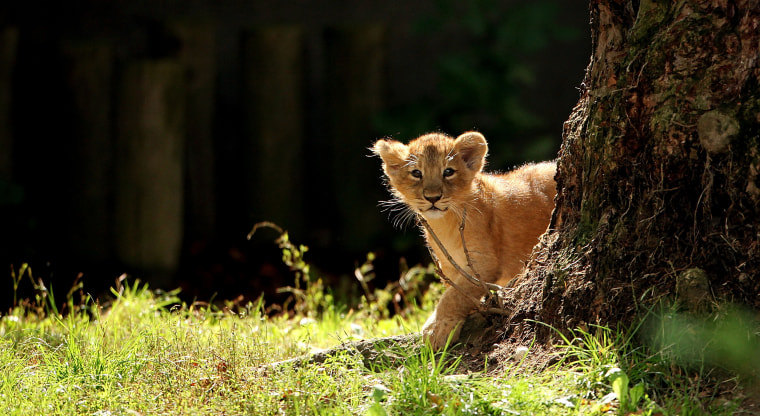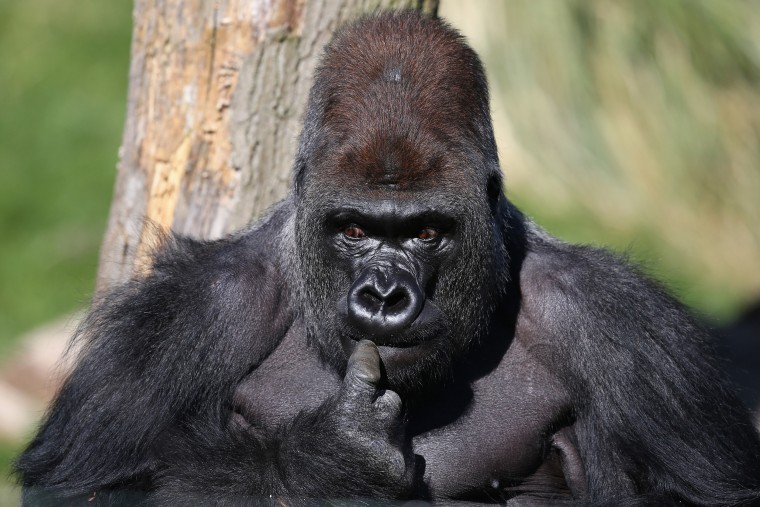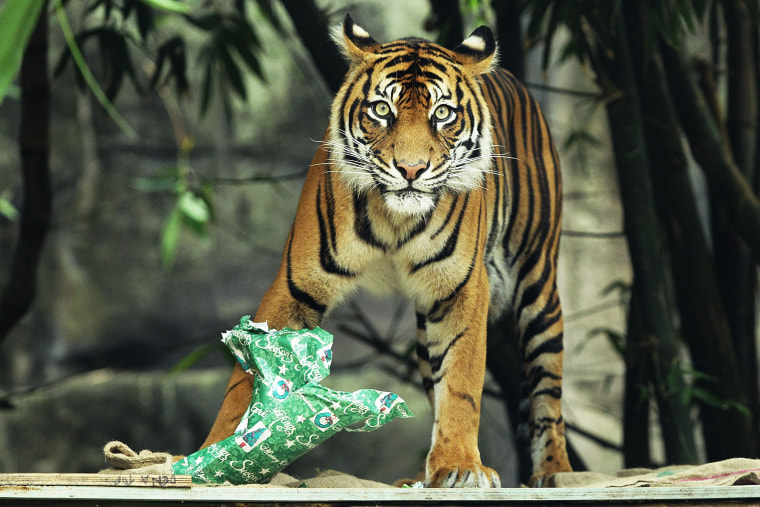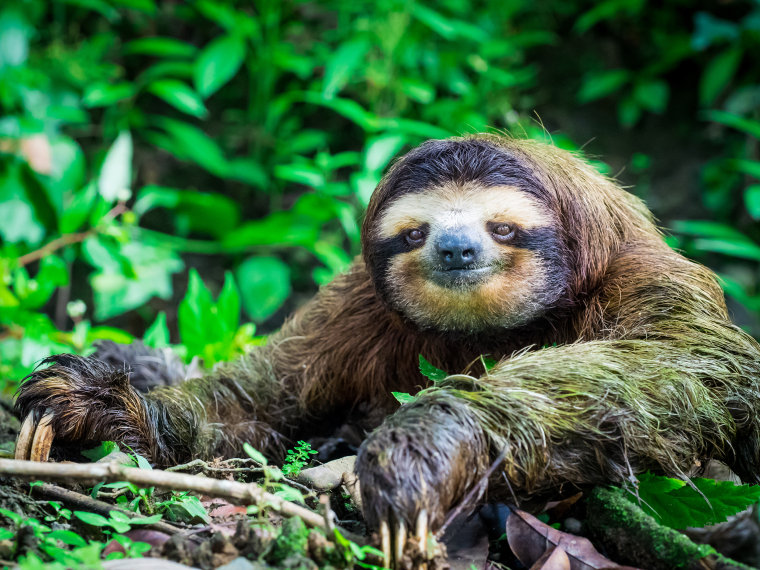The first selfie was a handprint on a rock #Neanderthal; 40,000 years later, homo sapiens is doing the same thing, only now with faces and phones, often posted to the internet for others to see.
Instagram, the home to many a selfie, now counts 800 million active monthly users, representing more than a tenth of the global population. In a time of paid influencers and personality-as-brand, Likes and Loves count as currency, lending tremendous power to the Instagram selfie. Like the box office and Nielsen ratings of yore, the race for social media capital fuels crazy competition — inspiring more skin, more exotic scenery, more dangerous stunts, and more #aww moments that feature adorable baby animals.

And, as a result, Instagram-hungry crowds are spawning a sinister business of people catering to animal selfies and ruining some of America’s most pristine areas.
In a move against wildlife trafficking and animal abuse, Instagram now generates warnings for certain hashtags in order to make some users think twice before posting. Search for #babytiger and Instagram wags a finger back at you, citing damaging environmental practices. The help page also warns against paying for exotic animal photo ops or destructive behavior like walking on wildflowers or carving one's initials into a tree.
While Instagram should be commended for their stance, a thoughtful algorithm does not solve the greater problem — that mass tourism harms nature to an irreversible degree. Take Costa Rica's Ostional Beach, where hundreds of selfie-seekers disrupt the annual breeding of the endangered olive ridley sea turtle.
The exploding black market for animal selfies is merely a response to social media’s grand economy of followers, likes, and impressions. From Mexico to Morocco, I have run into amateur animal handlers hustling a buck from tourists. I've had lion cubs thrust into my arms, defanged cobras slung at my feet, and a restrained brown bear that growled mournfully into my face. In Cancun, I paid a dollar for a selfie with a baby monkey that was most likely stolen from the Central American jungle.

Meanwhile in Rwanda, a gorilla permit costs $1500 for a one-hour interlude with the great apes in their native environment, chaperoned by well-trained park rangers. Instagram seems to know the difference, as #monkeyselfie triggers a warning but #gorillaselfie does not.
Yet despite the insight and support of conservation partners like World Wildlife Fund, Instagram’s new warnings come across as slightly sanctimonious. Policing hashtags without a broader human touch becomes problematic: Who decides what is 'grammable and what is not? What environmental issues deserve recognition over others?
Take, for instance, the unfortunate trend of #SharkCageDiving on Instagram and how it negatively impacts shark behavior. Instagram takes no stance on that hashtag, but such commodification of wildlife leads to unnatural human interactions, which leads to more selfies of unnatural wildlife interactions that normalize the behavior and inspire more tourists to chase unnatural and dangerous selfies. (Coincidentally, this year more people died taking selfies than from shark attacks; avoid #cliffs and #trains.)
In their attempt to inform responsible posting, how far should Instagram reach? #Sushi brings up nearly 20 million posts, and while some #tuna is sustainable, Instagram offers no precursory warning that #bluefintuna is currently overfished at three times the sustainable limit, depleting the ocean. Similarly, some #cruiseships are environmental and economic disasters, polluting ports, shutting down small business, and turning quaint seaside villages into once-a-week Wal-Marts.
How moral do we want our social media? Do we want Instagram weighing in on tourists eating dog meat in Vietnam or whale meat in Iceland? Do we want to be reminded that our taste for #porngirl and #pornlife might contribute to an industry that exploits women? If the last year has taught us anything, it’s that many social media consumers are less concerned with the truth behind a particular post than the way it makes us feel.
Cherry-picking a few guilty hashtags cuts at the smaller branches of the more daunting reality that wildlife is scarcer than ever. The beautiful animal shots that kept us flipping through National Geographic in the past are now gleaned from a shrinking number of protected wild places on the planet. We have reached a point when most published wildlife snaps derive from a tiny handful of pristine locations. Grizzly bear with struggling salmon in its mouth? Summertime in Alaska’s Katmai National Park. Bengal tiger in the wild shot with an iPhone? I can narrow it down to two national parks in India.

Pitting 800 million Instagram users against less than 4,000 wild tigers is a lose-lose situation. The commodification of rare wildlife — even images of wildlife — drives a race to the bottom. A user’s caption may be conservation-focused, but their production values typically are not.
A few pop-up warnings are not enough. Hashtag activism is not enough. Context matters. Cuddling a rehabilitated sloth from a licensed wildlife rescue center to which you’ve donated is quite different from paying a random guy to pose with a wild sloth that was poached out of a national park. Destinations, tourist boards and their business members need to encourage responsible social media. Sponsors should demand influencers comply with best practices. Travelers need to stay informed and choose photo ops wisely.
Before hitting "Share," we must ask ourselves, “How does this animal benefit from my posting it?” We have to consider the unintended consequences of our own social media feeds. We must come to know that if we geotag a rare #wildorchid, it’s very likely some #orchidhunter will go steal it for their collection.
Hidden things are often the most beautiful and not everything needs to be shared publicly. Not all selfies are innocent smiles. Photos and hashtags rarely show us the real story, and when it comes to wildlife and nature, our conscience needs to be stronger than a programmed pop-up ad.
Andrew Evans is a travel writer, author of The Black Penguin and National Geographic's first Digital Nomad. He can be found on Instagram at @WheresAndrew.

